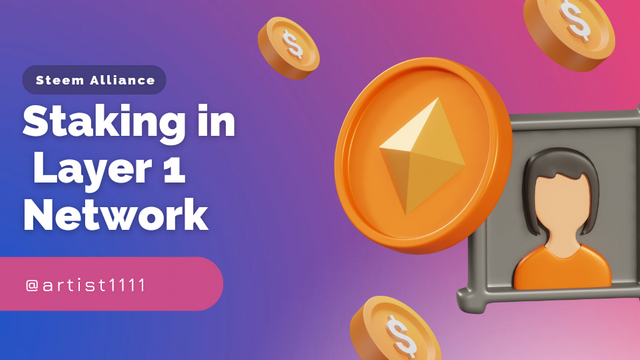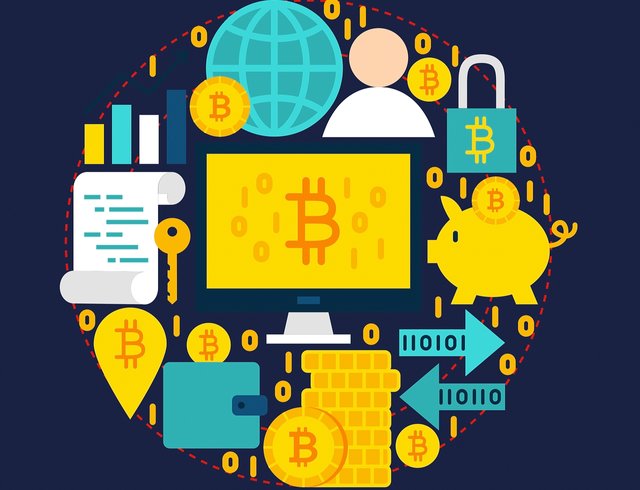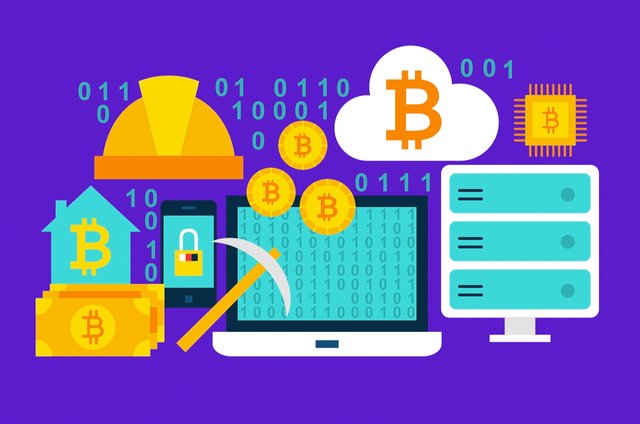Staking in Layer 1 Networks: Participating in Blockchain Consensus
Staking is the procedure by the audience secure a specific quantity of cryptocurrency or evidence in order to take part in a blockchain network's consensus mechanism. Staking is essential for the safety of networks including transaction validation in Layer 1 networks.
Let's examine the smooth running of staking and its contribution to blockchain consensus.

Canvas source Staking in Layer 1 (L1) networks is the method by which users, regularly referred to as validators, encrypt their cryptocurrency holdings as collateral in a contract called a smart contract.
Validators are in charge of approving new blocks to be added to the blockchain and verifying transactions. Additional tokens of cryptocurrency are given to validators as compensation for their efforts.
By staking, validators are guaranteed to have a financial stake in the safety of the entire network & have an incentive to act honorably as well as uphold the blockchain's integrity.
Staking benefits users and a network at large in an assortment of ways. First off, because validators are dispersed throughout the entire system and run independently of one another, staking offers a decentralized means of reaching consensus.

Because of its decentralization, the blockchain has more resilient and secure against censorship and threats.
Staking additionally encourages involvement in network governance and regular consumption, resulting builds a lively and active community of stakeholders.
Staking rewards and transaction expenses are used to repay validation in Layer 1 networks and their involvement.
Validators receive staking benefits according to their contribution to the network, which takes into things in mind like the quantity of cryptocurrency they have staked and how long they have been participating involved.
Earnings for validators incorporate fees for transactions from confirmed transactions. By providing financial incentives, validators are incentivized to carry out their responsibilities with diligence and integrity, hence augmenting their overall safety and stability of the network that uses blockchain technology.

Staking has many advantages, but there is drawbacks and factors to think considering for players. One issue is the possibility of "slashing," in which unlawful conduct or system outages result in its validators losing some of the money they have staked.
Validators must uphold a dependable infrastructure and follow network policies and procedures in order to reduce this risk.
Furthermore, some users might be repelled from taking part due to the technical difficulty of staking and the demand for constant maintenance, and would restrict the system's decentralization.
In conclusion, staking is essential for Layer 1 blockchain platforms given that it allows users to get involved in resolution and network security. Validators are compensated for their work and are encouraged to safeguard the integrity of the blockchain through staking.
Staking has a lot to offer in terms of transparency and network security, but in order to reach its full potential, a number major issues & concerns need to be resolved.
Staking, in general, enabling users to take an interest in blockchain consensus and governance, promoting the continual growth and democratization of Layer 1 networks.
Kind Regards
@artist1111

Adieu, folks!
May the winds of fortune
carry you to greatness!
May the winds of fortune
carry you to greatness!
X-promo :https://twitter.com/HamadkhanMWT/status/1781356430710173713?t=TW7_GkOtW3Ciqq6hSkE-kA&s=19
Note:- ✅
Regards,
@theentertainer